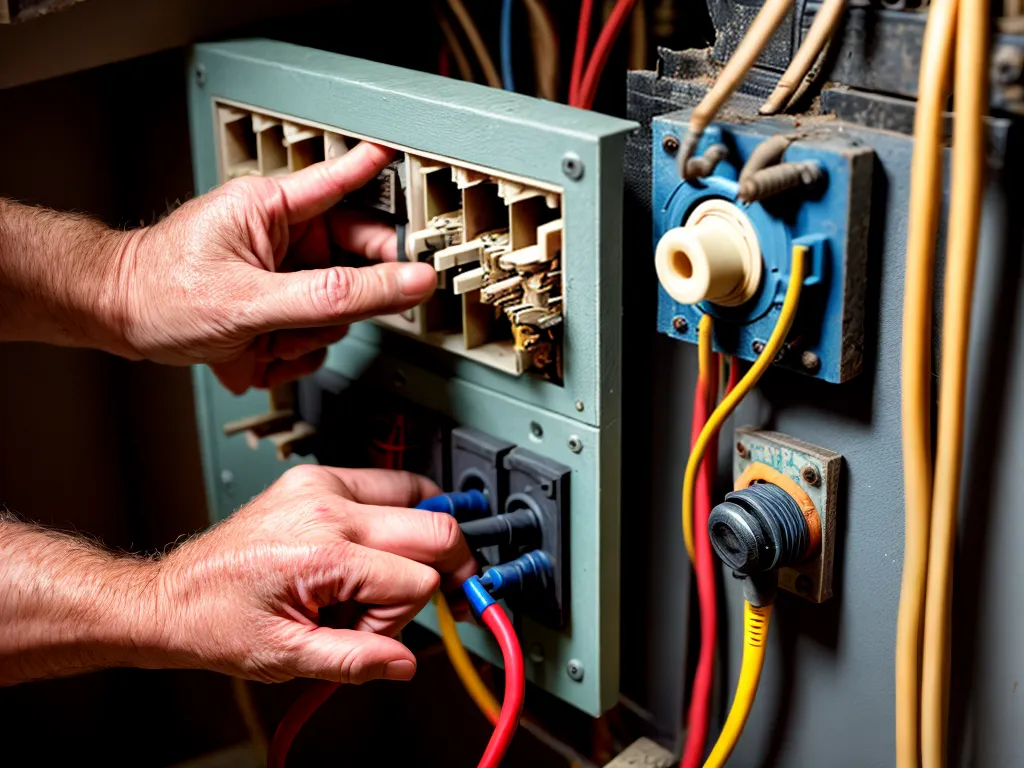
I recently purchased an old house built in the 1920s that still has the original knob-and-tube wiring. This antiquated wiring can be tricky to work with, so I decided to educate myself on how to troubleshoot and safely update it. Here's what I learned about working with this temperamental old electrical system in my vintage home.
Understanding Knob-and-Tube Wiring
Knob-and-tube (K&T) wiring was commonly installed in homes built prior to the 1940s. It features:
- Ceramic knobs - These hold the wires in place and prevent them from touching.
- Tube insulators - Wires are threaded through these to keep them separated.
- Open air - Wires are not packaged inside conduit and are open to air circulation.
- Cloth insulation - Early versions had cloth wrapped around wires as insulation.
- Rubber insulation - More modern K&T wiring has rubber insulation.
This primitive wiring system is obsolete by today's electrical standards for a few reasons:
- Fire hazard - Open wires and cloth insulation pose a fire risk.
- Insulation deterioration - The insulation materials become brittle over time.
- Unsafe modifications - Homeowners sometimes modify K&T in unsafe ways over the years.
- Inadequate for modern loads - Heavy electrical use today can overburden the system.
However, K&T can still be used safely if proper precautions are taken.
Dangers of Knob-and-Tube Wiring
While I want to preserve the vintage vibe of my old house, safety is still my top priority. Some key risks to be aware of with K&T wiring include:
- Shocks and electrocution - Degraded insulation can expose live wires.
- Fire - Exposed wires touching combustibles can spark fires. This is especially risky with open-air wires.
- Circuit overload - Heavy modern loads can overheat the wires.
- Damage - Rodents or vibration can damage the old brittle insulation.
To prevent hazards, it's critical that I troubleshoot my K&T wiring thoroughly.
Troubleshooting Tips
Here are some best practices I've learned for assessing my antique wiring:
Visual Inspection
- Carefully examine the knobs, tubes, splices, and wiring seeking signs of wear.
- Watch for cracked, damaged, or dried out insulation.
- Note any discolored or melted areas indicating heat damage.
- Check for modifications, splices, or repairs made by amateurs.
- Look for signs of rodent damage like chewed wires.
Physical Test
- Gently move wires and tap on knobs to check for soundness.
- Flag any areas where insulation crumbles or wires move loose.
Electrical Test
- Shut off power and gently tug on wires to verify power is off.
- Turn power back on and use a neon tester light to check for unwanted voltage on wires.
- Use an ohmmeter to measure resistance on wires - values far from zero indicate faults.
- Perform load testing by turning on all lights and appliances. Check for dimming lights or warm wires.
Dealing with Problem Wiring
When I find faults in my K&T wiring, here are some tips to properly address it:
- For individual small issues, I can carefully splice, reinforce, or replace damaged sections.
- If wires are degraded throughout, it may be safest to replace the entire wire run.
- For fire safety, I should remove any wiring near flammable insulation or concealed spaces.
- When removing abandoned wires, it's critical to fully disconnect their origin.
- I always turn off power at the main panel before doing any work.
- I make sure to use the proper size and type of wiring and fuse if replacing or upgrading lines.
- For large projects, I will hire a licensed electrician familiar with antique wiring.
Replacing an entire K&T wiring system can be costly. If budget is a concern, I can start with the most hazardous sections first. I always prioritize repairs that improve fire safety.
Living with Knob-and-Tube Wiring
While upgrading old wiring is ideal, some homeowners choose to keep K&T intact. If I keep mine, there are some precautions I should take:
- Use gentle repairs versus amateur splices and alterations.
- Avoid overloading circuits and minimize extension cords.
- Check for hot spots after high electrical use.
- Never run wires near flammable materials in walls or attics.
- Keep fire extinguishers handy just in case.
- Have an electrician do periodic inspections.
I hope these troubleshooting and repair tips help other vintage home owners keep their old K&T wiring safe. With proper diligence, these antiquated wires can be maintained adequately. But upgrading to modern wiring should be a priority for long-term safety.